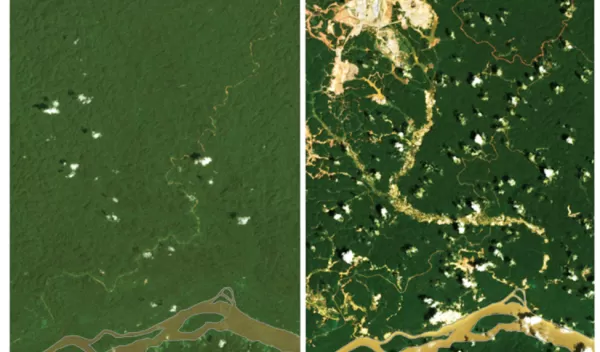
Study shows 'unprecedented' changes to world's rivers
The way rivers function is significantly affected by how much sediment they transport and deposit.
River sediment — mostly sand, silt and clay — plays a critical ecological role, as it provides habitat for organisms downstream and in estuaries. It is also important for human life, resupplying nutrients to agricultural soils in floodplains and buffering the rise in sea levels from climate change by delivering sand to deltas and coastlines.
But these functions are under threat: In the past 40 years, humans have caused unprecedented, consequential changes to river sediment transport, according to a new study by scientists at Dartmouth, supported by the U.S. National Science Foundation and published in Science.
Using satellite images from the joint NASA-U.S. Geological Survey Landsat program and streamflow data, the researchers examined changes in how much sediment was carried to the oceans by 414 of the world's largest rivers from 1984 to 2020.
"Humans have been able to alter the world's biggest rivers at rates that are unprecedented in the recent geologic record," said lead author Evan Dethier. "The amount of sediment rivers carry is generally dictated by natural processes in watersheds, like how much rain there is or whether there are landslides or vegetation. We found that human activities are overwhelming these natural processes and outweighing the effects of climate change."
The findings show that widespread 20th century dam building in Earth's northern areas — North America, Europe and Asia — reduced the global delivery of water-borne sediment from rivers to the oceans by 49% relative to pre-dam conditions. However, in Earth's southern areas — South America, Africa and Oceania — sediment transport has increased in 36% of rivers due to major land-use changes, most of which are associated with deforestation.
In the North, dam building has been the dominant agent of change for rivers in the past several centuries. "One of the motivations for this research has been the global expansion of building large dams," says co-author Francis Magilligan, a geographer at Dartmouth who studies dams and dam removal.
Rivers are responsible for creating floodplains, sandbars, estuaries and deltas due to the sediment that they transport. However, once a dam is installed, that supply of sediment, including its nutrients, is often shut off.
The results in the North are striking and could foreshadow future changes to come for the South. The study reports that there are more than 300 dams planned for large rivers in South America and Oceania, including the Amazon River which carries more sediment than any other river in the world.
"Rivers are pretty sensitive indicators of what we're doing to the surface of the Earth — they are like a thermometer for land-use change," says co-author Carl Renshaw, an earth scientist at Dartmouth. "It's well-established that there's a soil loss crisis in the U.S., but we just don't see it in the sediment export record because it's all getting stuck behind these dams, whereas we can see the signal for rivers in the global South."
How dams retain sediment and how land-use practices are increasing downstream erosion are principles the researchers hope can be used to help inform planning decisions and environmental management policies in the future.
